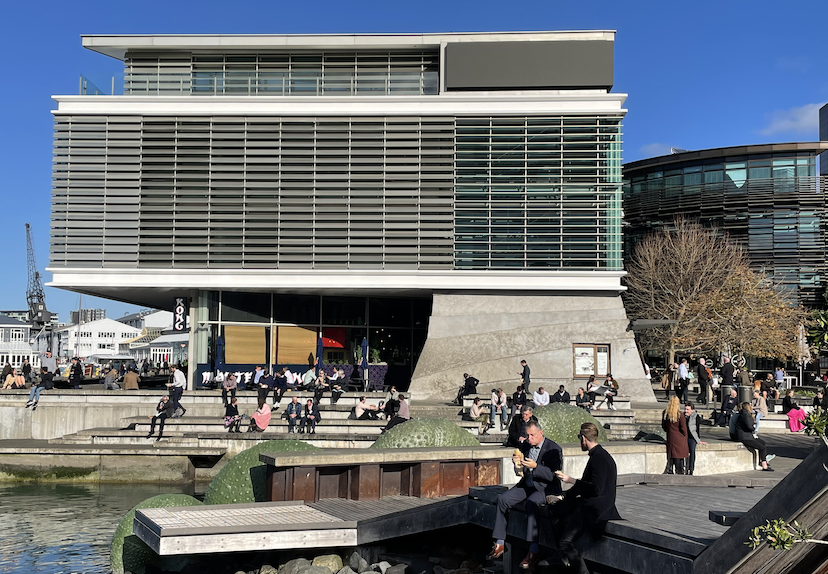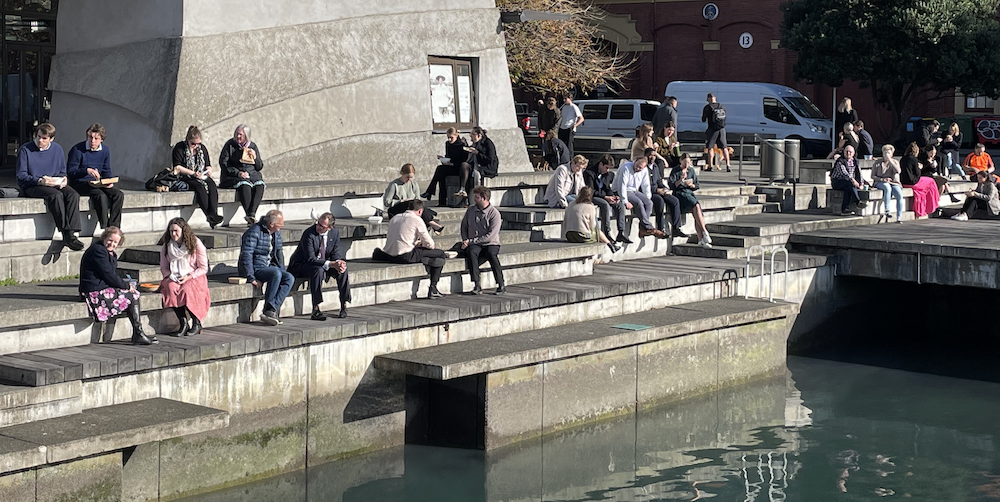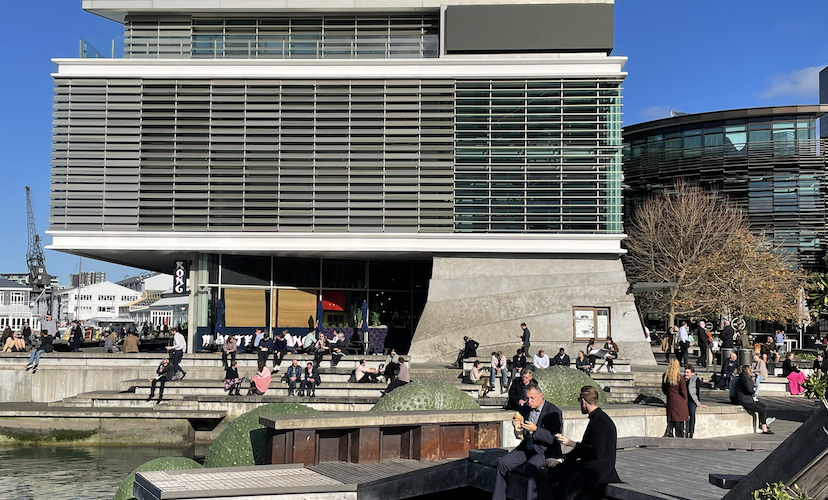In an announcement released quietly on 4th July, by MBIE, there is some massive cause for celebration. “MBIE advises seismically vulnerable buildings can remain occupied” is the best, most welcome news I’ve heard for years – and I imagine that it will be music to the ears of many building owners around the city too.
“New guidance published by the Ministry of Business, Innovation and Employment (MBIE) today advises most seismically vulnerable buildings are not imminently dangerous and can remain occupied while seismic remediation work is planned, funded and undertaken.”
It then goes on to say:
“Compared to most business-as-usual risks, earthquakes are low probability,” says Dr Dave Gittings, MBIE’s Manager Building Performance and Engineering…. …“An NBS rating is not a predictor of building failure in an earthquake and buildings with low NBS ratings are not imminently dangerous” Read THIS.
This of course is a statement that would have been highly useful if it had come out at any stage in the past ten years, before thousands of people – tens of thousands? – were compulsorily moved from their warm, quiet, purpose-built and fully functional offices, to makeshift offices elsewhere, or even back home, as a perceived “better” alternative to their offices. The city building populations in Wellington have literally been decimated since 2013 and 2016 quakes, with buildings being emptied out and people “temporarily” shelved elsewhere.

That means, of course, that if we were sensible people, there would be a rush of people this morning, flooding the streets once more to go back to their old offices. There are, apparently, many buildings out there which are empty at the moment, waiting for their tenants to come back. I think that Asteron House is the biggest – Mark Dunajtschik’s ugly WAM monster opposite the Railway Station – still empty, apparently. There is also the Ministry of Health’s ugly Po-Mo monster near parliament, vacated only weeks ago. You can all come back now. There is even the entire City Council, who have vacated the two main buildings down at Civic Square. You can come back now too!! Even, perhaps, the Library!! Go on, tell me why not! And of course there is also Meridian’s prime waterfront HQ, looking sadly shuttered when I went past yesterday. Vacant from the waist up, although amusingly, the building’s automated external louvres were still working automatically, opening and closing the aluminium louvres to restrict the sun.

But are we actually sensible people? I suspect not. There will have been some HSE bod who proclaimed loudly that “for reasons of risk, we must vacate”. Will they now eat their words and instead regurgitate the words of Dr Dave Gittings instead? “For reasons of complete lack of serious risk, and manageable serviceability, we can now go back, forthwith.”





Explain it to me in maths of one syllable. Is this actually an effective roll-back of the tyranny of the NBS, or is it just another speculation on the likelihood of an event big enough to make it count?
My reading of the Canterbury quakes was that, when put under enough stress, poorly sited/designed/built structures of any age or technology fall down and wobbly bits fall off. On the other hand, we know that well sited/designed/built structures have been standing for 100 years or more regardless of the evolution of seismic wisdom.
But does NBS reflect that experience – and is any regulatory body seriously going to walk away from NBS?
I think the bigger question is – what EXACTLY is the standard we are working to. The issue seems to lie (lay?) with the Red Book / Yellow chapter conundrum. Engineers work with the Red book, which gives one set of numbers, but it is difficult and awkward, but it is the Law. They can, and do, work with the Yellow chapter, which although not the law, it is nonetheless easier to work with and so Engineers prefer that, it seems. However, legally, it is not the law and so currently has no legal status. Its more like an engineering version of “I reckon” and so that’s not good enough.
I should say that the Yellow chapter applies only to reinforced concrete structures, not to steel or mass timber. I should also point out that I am not an Engineer, and the Yellow chapter reads like a lot of gobbledegook to me.
One thing that could / should / wish it would be done is for the MBIE to adopt it or ban it. Its of no help sitting in the Twilight Zone…
And a serious question: is anybody doing detailed research mapping NBS ratings back onto actual earthquake outcomes? There must be a gold mine of data from Christchurch.
Probably. Have a look at the SESOC webpage. There are bound to be hordes of Engineers running rabid over that sort of thing.
Hey Nemo,
Great news indeed but I can see many reasons why people wouldn’t want to rush back in the CBD: avoid getting sick, continue to capitalise on efficiency gains brought by WFH (like commute time, cost, etc) and, why not, leave the said office buildings empty long enough to invite a conversion to housing instead of empty offices. All of these are sensible reasons to stay away from CBD too, right?
Privately, I think that what the mechanical services industry should have been tasked to do, is to have reworked everyone’s HVAC over the last two years. I find it infuriating when you go back to a place that has been empty for the last few months / years and find that they still have the same HVAC system in use. All that time wasted, when it could have been gainfully used to Covid-proof a space.
Converting office to housing is a big one. Easier said than done, that’s for sure. And not all office buildings are acceptable as shells for inserting residential. Plus, change of use conditions make it much harder to convert than just to upgrade for better commercial office space….
A step in the right direction, that’s for sure. Any ideas what will happen with the incoming changes to the required seismic code/hazards at the end of the year? My understanding is that engineers will then be required to review/design buildings with stronger earthquakes in mind (in Wlg at least) – which will then reduce existing buildings NBS. So your 65% rated building may suddenly find itself in the sub 34% – might be an extreme example but it could certainly cause chaos with the cities building stock – despite the MBIE clarification of risk
Yes, I think you are right.
I don’t think this guidance has been put out just to sort the current confusion, but more to prepare people for the upcoming seismic model changes which will significantly increase loads (and decrease %NBS) in any location close to the Hikurangi subduction zone.
My understanding (limited) is that while the NBS may change, is that people would not have to retest their buildings and re-engineer their Seismic assessment reports. Whatever piece of paper you have from an Engineer stating 64% is therefore vital – hang onto it. Can’t go down to 34% unless you have a new report. Stic with what you want and put two fingers up to anyone who asks for more.